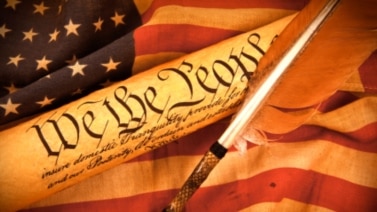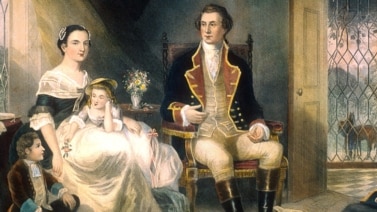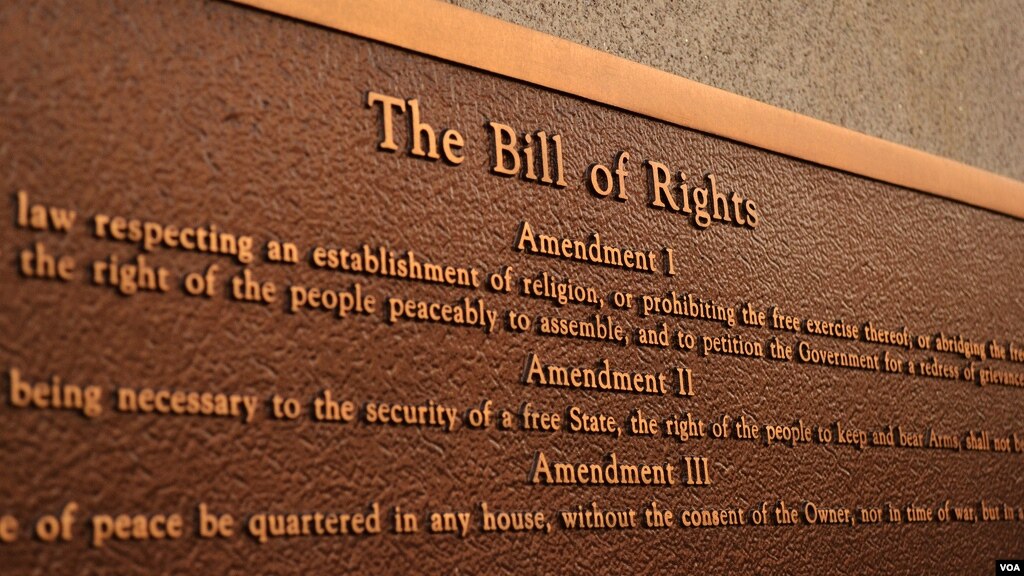
The first ten amendments -- or, changes -- to the U.S. Constitution are called the Bill of Rights. After 2/3 of Congress and state legislatures approved them, they became effective in 1791.
AMENDMENT I: Freedom of Expression (1791)
Congress shall make no law respecting an establishment of religion, or prohibiting the free exercise thereof; or abridging the freedom of speech, or of the press; or the right of the people peaceably to assemble, and to petition the Government for a redress of grievances.
Texas v. Johnson, 1989

In 1989, the Supreme Court ruled that the first amendment permitted Gregory Lee Johnson to burn an American flag.
Mr. Johnson, pictured here, burned the flag in front of the Dallas City Hall, Texas. He was protesting the administration of President Ronald Reagan.
Texas state law prohibited damaging the American flag on purpose. But a majority of justices on the Supreme Court said Mr. Johnson’s action aimed to express a political idea.
Even if that idea offends some people, the Court said, the U.S. government cannot prohibit someone from expressing it.
AMENDMENT II: Right to Bear Arms (1791)
A well regulated Militia, being necessary to the security of a free State, the right of the people to keep and bear Arms, shall not be infringed.
District of Columbia v. Heller, 2008
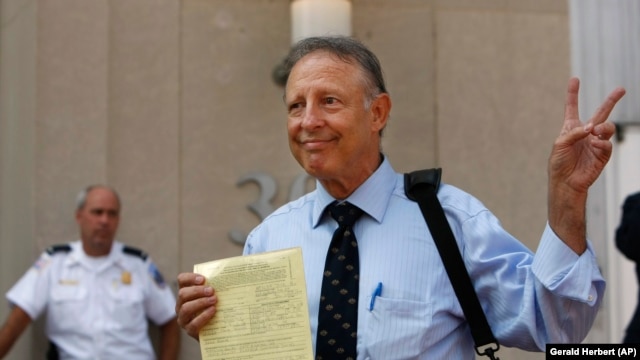
In 2008 the Supreme Court made its first ruling in 70 years related to the second amendment. The Court said an individual has the right to have a handgun in his or her home for self-defense. Here, Dick Heller, a police officer who sued to overturn Washington, DC’s ban on handguns, holds his gun registration.
Previously, the Court said people may have guns only in connection to service in a state militia.
AMENDMENT III: Quartering of Troops (1791)
No Soldier shall, in time of peace be quartered in any house, without the consent of the Owner, nor in time of war, but in a manner to be prescribed by law.
Griswold v. Connecticut, 1965

The third amendment is not used very often in Supreme Court cases; however, the Court has used it as an example of an individual’s right to some kinds of privacy.
For example, in 1965 the Court decided the state of Connecticut could not legally prohibit married couples from using contraceptives, including birth control pills. The Court found couples had a right to privacy within marriage.
The majority opinion on the case said several amendments, including the third, require that some areas of people’s lives be off limits to the government.
AMENDMENT IV: Unreasonable Searches and Seizures
The right of the people to be secure in their persons, houses, papers, and effects, against unreasonable searches and seizures, shall not be violated, and no Warrants shall issue, but upon probable cause, supported by Oath or affirmation, and particularly describing the place to be searched, and the persons or things to be seized.
Mapp v. Ohio, 1961
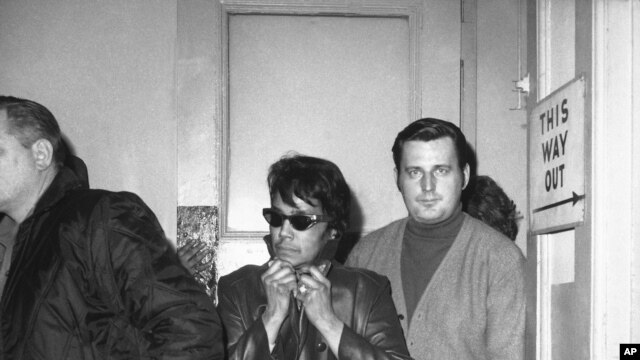
People who watch American crime shows may know one use of the fourth amendment: that police have a judge’s permission -- or warrant -- for most searches of people's homes.
One landmark case related to unreasonable search and seizure involves Dollree Map, pictured here entering a police station. Ms. Mapp was arrested in her apartment in New York City, where police said they found drugs and pornography.
But the Supreme Court overturned her conviction. It said lawyers could not use the evidence against Ms. Mapp because it was seized without a warrant.
In this 1961 case the Court found that rule applied both to the states and to the federal government.
AMENDMENT V: Due Process of Law (1791)
No person shall be held to answer for a capital, or otherwise infamous crime, unless on a presentment or indictment of a Grand Jury, except in cases arising in the land or naval forces, or in the Militia, when in actual service in time of War or public danger; nor shall any person be subject for the same offence to be twice put in jeopardy of life or limb; nor shall be compelled in any criminal case to be a witness against himself, nor be deprived of life, liberty, or property, without due process of law; nor shall private property be taken for public use, without just compensation.
Miranda v. Arizona, 1966
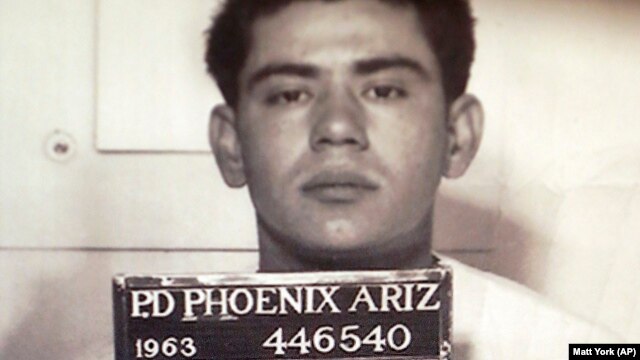
“You have the right to remain silent. Anything you say can and will be used against you in a court of law…”
These words may also be familiar to those who watch American crime shows. They are the beginning of the Miranda Warning that helps protects people’s fifth amendment rights. Those include a right to a lawyer and a right not to incriminate yourself.
The name comes from a man named Ernesto Miranda, pictured above. He was accused of murder and rape. Police questioned him without a lawyer.
Ernesto Miranda eventually confessed to the crimes. But in 1966 the Supreme Court decided that he could not be convicted based on his confession because police had not told him about his fifth amendment rights before they interrogated him.
AMENDMENT VI: Right to a Fair Trial (1791)
In all criminal prosecutions, the accused shall enjoy the right to a speedy and public trial, by an impartial jury of the State and district wherein the crime shall have been committed, which district shall have been previously ascertained by law, and to be informed of the nature and cause of the accusation; to be confronted with the witnesses against him; to have compulsory process for obtaining witnesses in his favor, and to have the Assistance of Counsel for his defence.
Taylor v. Louisiana, 1975
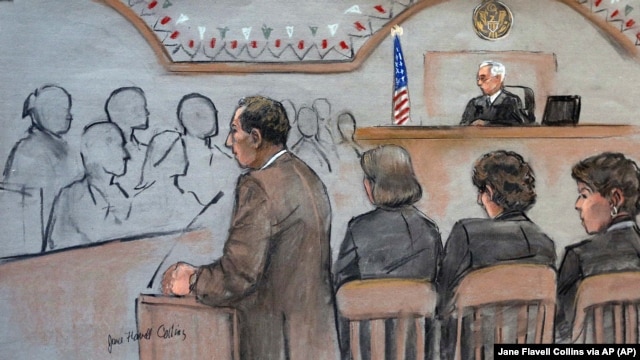
The sixth amendment requires that people accused of a crime have a public trial by a jury of unbiased citizens. But until 1975, women did not have serve on juries unless they wrote and said they were interested in being selected.
Taylor v. Louisiana decided that juries had to include a “representative cross-section of the community” — including women.
Here, a March 2015 courtroom drawing shows the death penalty trial of Dzhokhar Tsarnaev, who was found guilty of bombing the Boston Marathon. The government attorney addresses a jury of both women and men.
AMENDMENT VII: Trial by Jury in Civil Cases (1791)
In suits at common law, where the value in controversy shall exceed twenty dollars, the right of trial by jury shall be preserved, and no fact tried by a jury, shall be otherwise reexamined in any Court of the United States, than according to the rules of the common law.
Markman v. Westview Instruments, Inc., 1995

The seventh amendment describes the other kinds of cases a jury can decide.
One 1995 Supreme Court case ruled on who should decide on a dispute about the meaning of a patent claim related to dry cleaning businesses — such as Jimmy Story’s in Tennessee, pictured here.
In this case, all nine of the justices agreed that judges are more appropriate than juries to find the meaning of patent claims.
AMENDMENT VIII: Cruel and Unusual Punishment
Excessive bail shall not be required, nor excessive fines imposed, nor cruel and unusual punishments inflicted.
Furman v. Georgia, 1972; Gregg v. Georgia, 1976
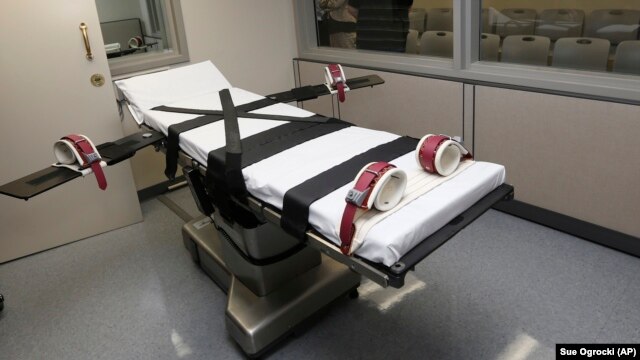
In 1972, the Supreme Court ruled the death penalty could violate the eighth amendment because it was “cruel and unusual punishment.”
The Court’s decision was mostly related to how the penalty was applied. Many states at that time did not have a fair or regular system for deciding which prisoners were put to death.
Four years later, the Supreme Court decided the death penalty could be constitutional.
For some crimes, such as murder, the Court said, the death penalty could be appropriate. The Court also said death penalty cases should follow a careful process to establish a common standard.
AMENDMENT IX: Unlisted Rights (1791)
The enumeration in the Constitution, of certain rights, shall not be construed to deny or disparage others retained by the people.
Roe v. Wade, 1973

The Supreme Court overturned the law in more than 30 states when it said in 1973 that a woman had the right to end a pregnancy for any reason in the first trimester — about 12 weeks.
The Court explained that several Bill of Rights amendments established areas of privacy. And, it said the ninth amendment could also be considered to protect an individual’s privacy. The majority of justices ruled that “the right to privacy includes the abortion decision.”
But the justices said that a woman’s right to an abortion was not unlimited. Roe v. Wade permitted states to restrict abortions later in pregnancy.
Here, Norma McCorvey — called Jane Roe — and her attorney Gloria Allred hold hands as they leave the Supreme Court building 16 years after their case legalized abortion.
AMENDMENT X: States' Rights (1791)
The powers not delegated to the United States by the Constitution, nor prohibited by it to the States, are reserved to the States respectively, or to the people.
National League of Cities v. Usery, 1976; Garcia v. San Antonio Metropolitan Transit Authority, 1985
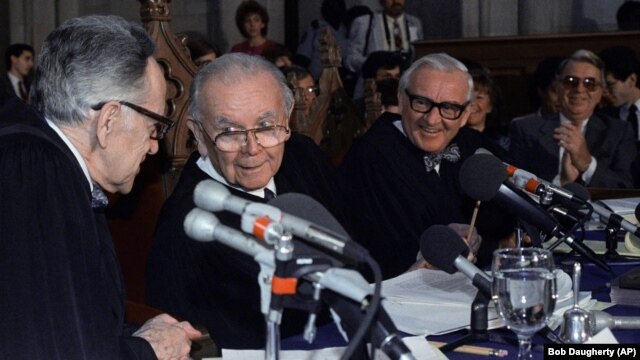
The tenth amendment describes a federal system, in which the federal government has some powers and the states have some powers.
A 1976 tenth amendment case determined that the federal government’s Fair Labor Standards Act did not apply to state employees. The Act included rules about the minimum amount workers must be paid, as well as requirements related to workers working more than their usual hours.
Nine years later, the Court said federal laws did apply to the state public transportation agency in San Antonio, Texas.
The majority opinion in the 1985 case — written by Judge Harry Blackmun, pictured here on the left in 1987 with other Supreme Court justices — argued that it was the structure of the U.S. government that created a federal system, rather than specific limits on federal power.

